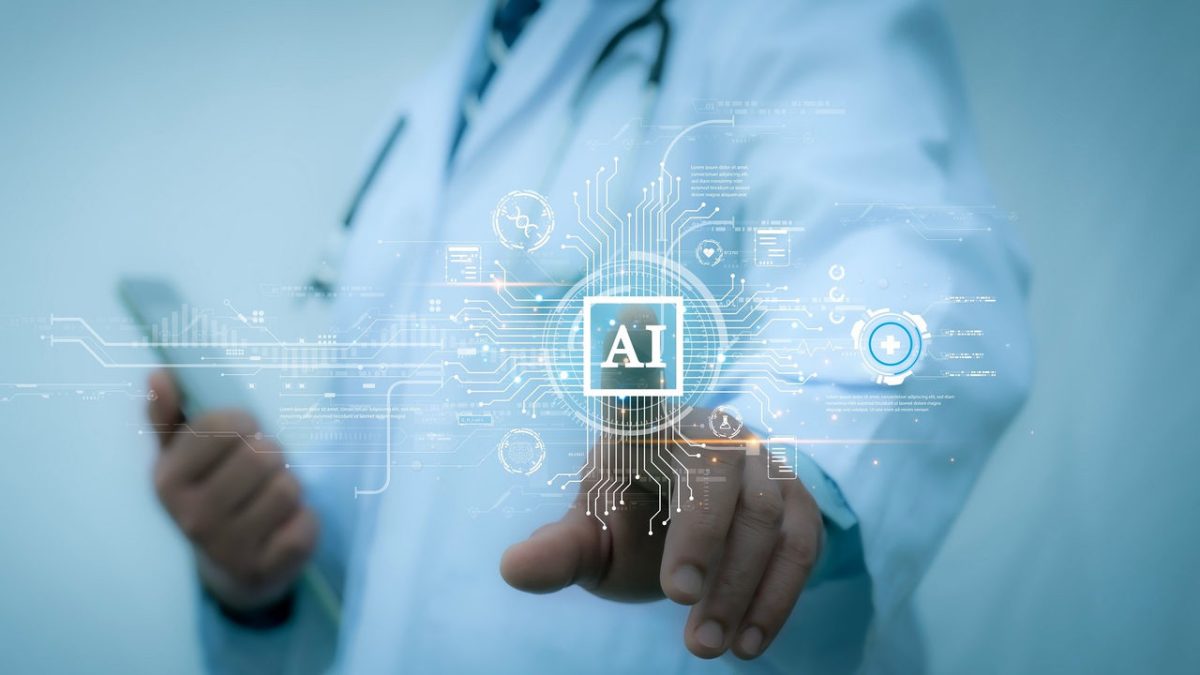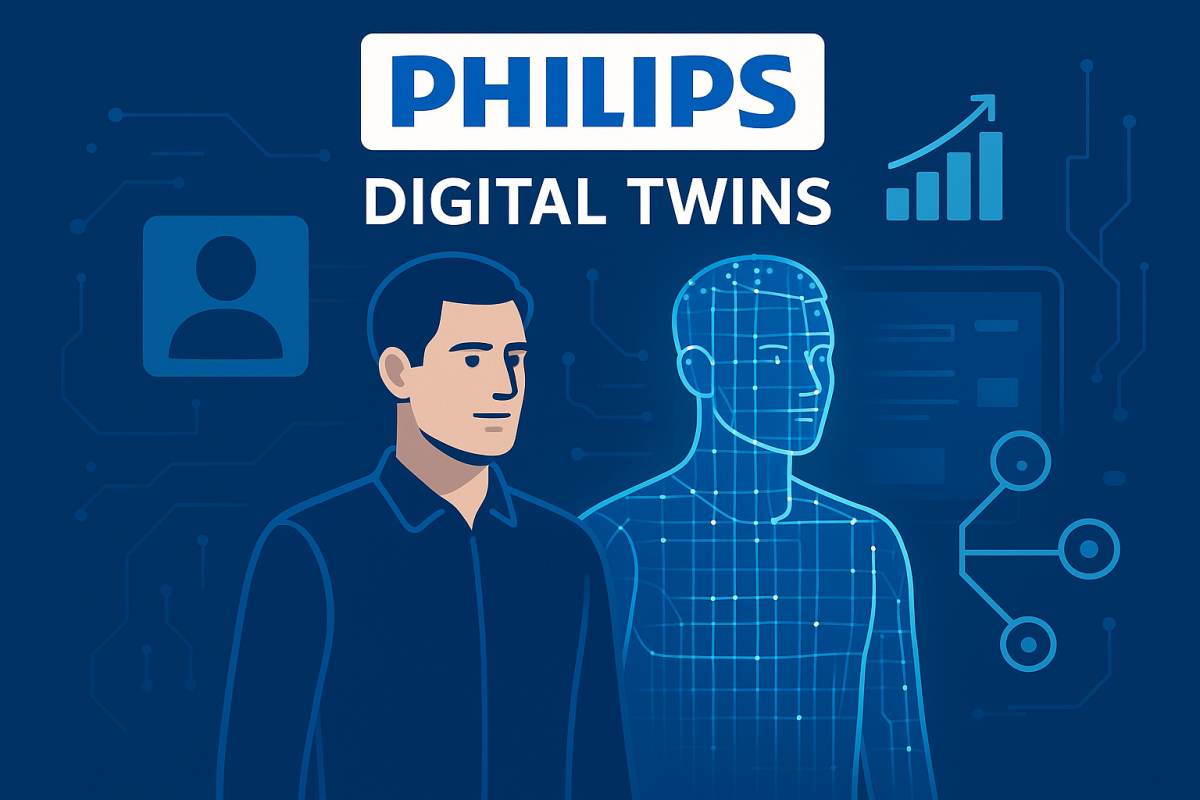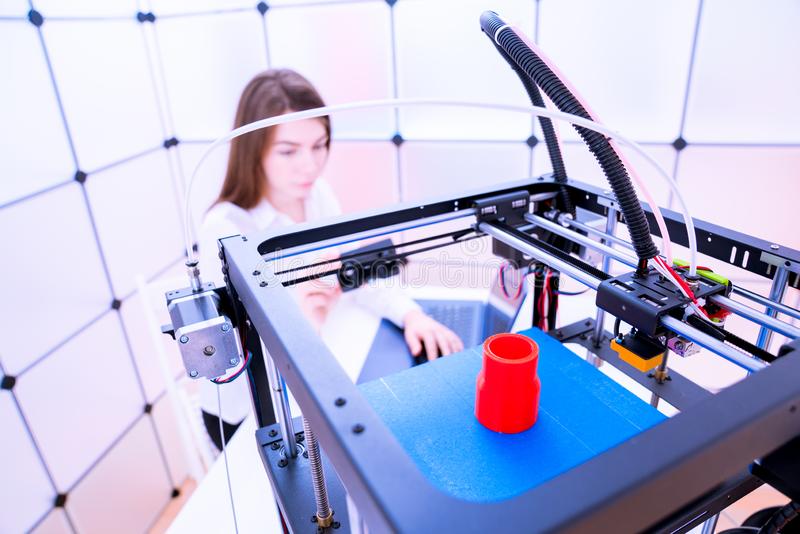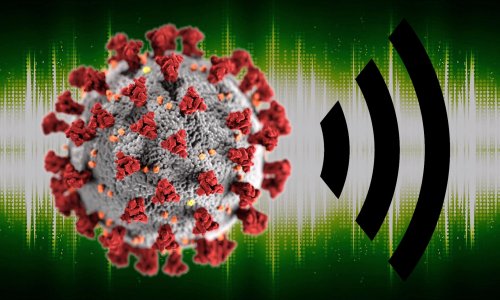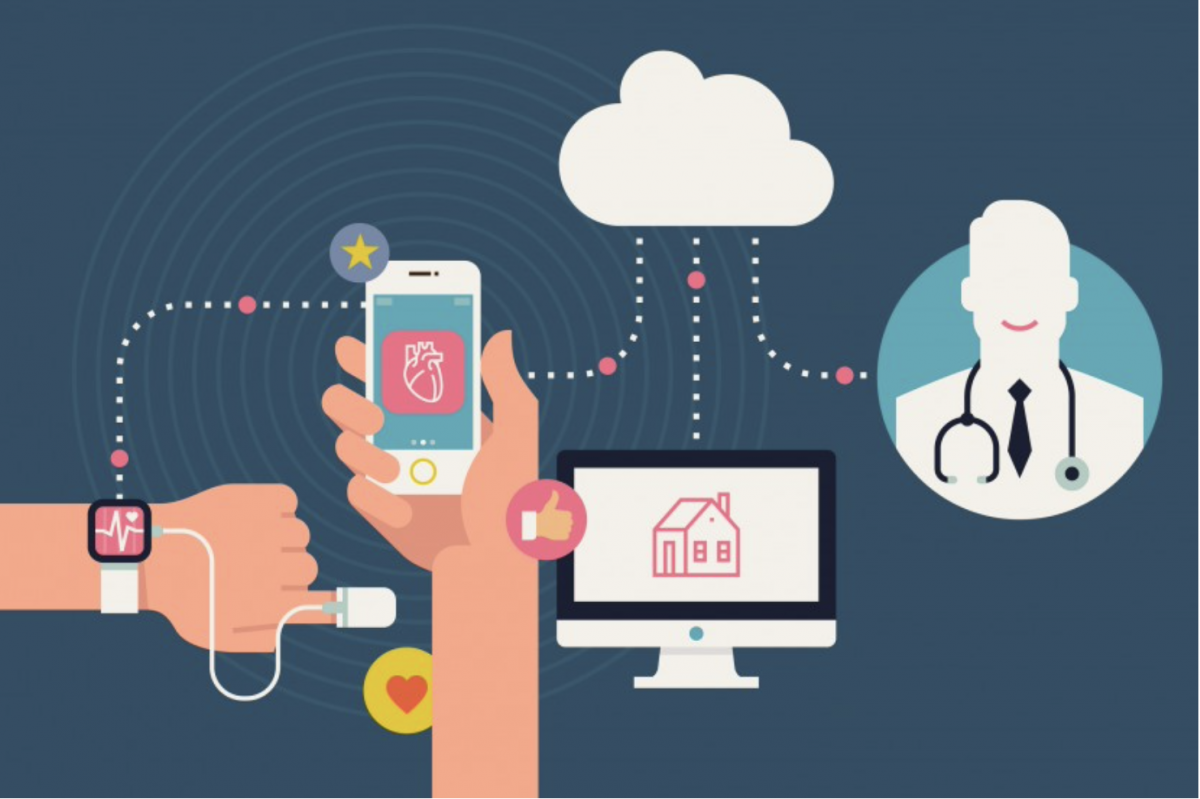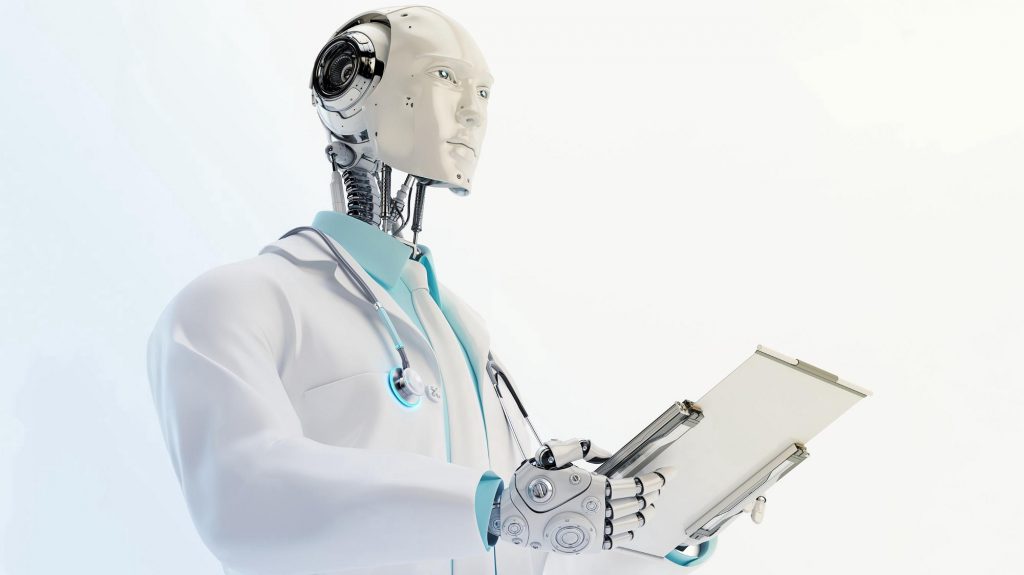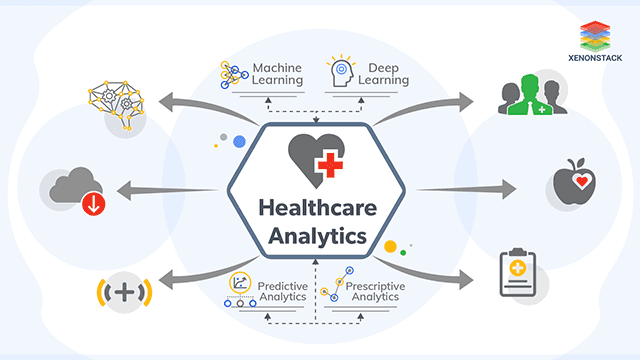No ratings yet.
You probably think of cars, airplanes, jet engines, or heavy machinery when you hear the term ‘digital twin.’ Conversely, Philips likely evokes images of hospital monitoring, TVs, or shavers. Nonetheless, Philips, a world leader in healthcare technology, is changing the story of the digital twin by taking it from the factory floor to the hospital setting and, eventually, to the human body.
From Buildings to Bodies
Digital twins, virtual models of physical systems, have long been used to optimize industrial operations (Emmert-Streib, 2023). Now, Philips is applying these principles to healthcare, starting with infrastructure.
In a recent hospital demonstration (Philips Healthcare, 2023), a care unit was digitally replicated and simulated to track patient flow, staff shifts, and room capacity. By adjusting parameters like staff availability and care demand, the model revealed impacts on key performance indicators such as discharge times. As such, data derived from these models provides administrators with powerful insights to optimize hospital operations.
Predictive Machines and Personalized Organs
Philips isn’t stopping at buildings. Their MRI systems now use digital twin models to track performance, forecast failures, and guide maintenance. Combining live sensor data with historical information, these simulations predict machine states, moving healthcare from reactive to predictive servicing (Philips, 2018a). In clinical settings where downtime delays diagnoses, foresight like this can be lifesaving.
The company has also ventured into modeling the human heart. In 2015, it introduced HeartModel, which generates personalized 3D heart simulations using ultrasound data (Philips, 2018b). By tailoring these anatomical models to individual physiology, clinicians can better evaluate cardiac function and plan treatments. Yet challenges remain. No two hearts are identical, and building universally accurate models is complex (Philips Nederland, 2022). Therefore, instead of replicating the entire human body, Philips now focuses on modular ‘building blocks’ that already add clinical value, such as single-organ models in cardiovascular care (Philips Nederland, 2022).
Beyond Twins
Digital twins are just one part of Philips’ broader vision. The company is also exploring technologies like virtual reality (VR) and augmented reality (AR). VR, for instance, would enable simulations of lifelike medical scenarios, allowing clinicians and students to practice complex procedures in safe, controlled environments. AR holds promise in surgery: imagine overlaying patient-specific 3D models onto the body, enabling surgeons to ‘see through’ the skin and anticipate anatomy before operating (Philips, 2018b).
Why this matters now
These innovations arrive at a critical moment, as healthcare systems are under immense pressure. According to the Future Health Index 2025, over 30% of patients experience worsening conditions due to delays, and 1 in 4 are hospitalized before seeing a specialist (Philips, 2025b). AI-powered digital twins could help ease these burdens by streamlining diagnoses, predicting complications, and personalizing care.
However, adoption isn’t straightforward. While 82% of healthcare professionals believe AI tools can save lives, only 59% of patients share that trust (Philips, 2025a). Concerns over accuracy, ethics, and data security remain barriers, highlighting that building public confidence is as important as advancing the technology itself.
A New Kind of Value
Philips’ transformation is not just technological, it’s strategic. Mapped onto the Business Model Canvas, Philips’ trajectory is clear. Key resources now extend beyond hardware to include AI, cloud platforms, and patient data. Customers increasingly consist of hospitals, clinicians, and health systems, and revenue streams increasingly revolve around ‘insight-as-a-service’ (McKinsey & Company, 2023), marking a shift from product-driven to data-driven ecosystems (Weill & Woerner, 2015).
The Future
So, digital twins are more than a breakthrough, they represent a shift towards predictive, personalized care that could redefine the future of healthcare. Ultimately, their impact depends not just on innovation, but on society’s willingness to embrace it.
As long as these tools remain complements to existing workflows, they have my trust. What about you, do you trust these developments?
References
Emmert-Streib, F. (2023). What is the role of AI for digital twins? AI, 4(3), 721–728. https://doi.org/10.3390/ai4030038
McKinsey & Company. (2023). How healthcare systems can become digital-health leaders. McKinsey & Company. https://www.mckinsey.com/industries/healthcare/our-insights/how-healthcare-systems-can-become-digital-health-leaders
Philips. (2018a, August 30). The rise of the digital twin: How healthcare can benefit. Philips Global. https://www.philips.com/a-w/about/news/archive/blogs/innovation-matters/20180830-the-rise-of-the-digital-twin-how-healthcare-can-benefit.html
Philips. (2018b, November 12). How a virtual heart could save your real one. Philips Global. https://www.philips.com/a-w/about/news/archive/blogs/innovation-matters/20181112-how-a-virtual-heart-could-save-your-real-one.html
Philips Nederland. (2022, May 19). Met een digitale tweeling kunnen we voorspellen hoe een patiënt reageert. Philips Nederland. https://www.philips.nl/a-w/about/news/archive/standard/about/news/articles/2022/20220519-met-een-digitale-tweeling-kunnen-we-voorspellen-hoe-een-patient-reageert.html
Philips. (2025a). Future Health Index 2025: Building trust in healthcare AI. Philips Global. https://www.philips.com/a-w/about/news/future-health-index/reports/2025/building-trust-in-healthcare-ai
Philips. (2025b, May 14). Philips Future Health Index 2025: AI poised to transform global healthcare, urging leaders to act now. Philips Global. https://www.philips.com/a-w/about/news/archive/standard/news/press/2025/philips-future-health-index-2025-ai-poised-to-transform-global-healthcare-urging-leaders-to-act-now.html
Philips Healthcare. (2023, February 16). Optimal care system design using Digital twin [Video]. YouTube. https://www.youtube.com/watch?v=2Bf6VfDVtmU
Weill, P., & Woerner, S. L. (2015). Thriving in an increasingly digital ecosystem. MIT Sloan Management Review, 56(4), 27–34. https://sloanreview.mit.edu/article/thriving-in-an-increasingly-digital-ecosystem/
